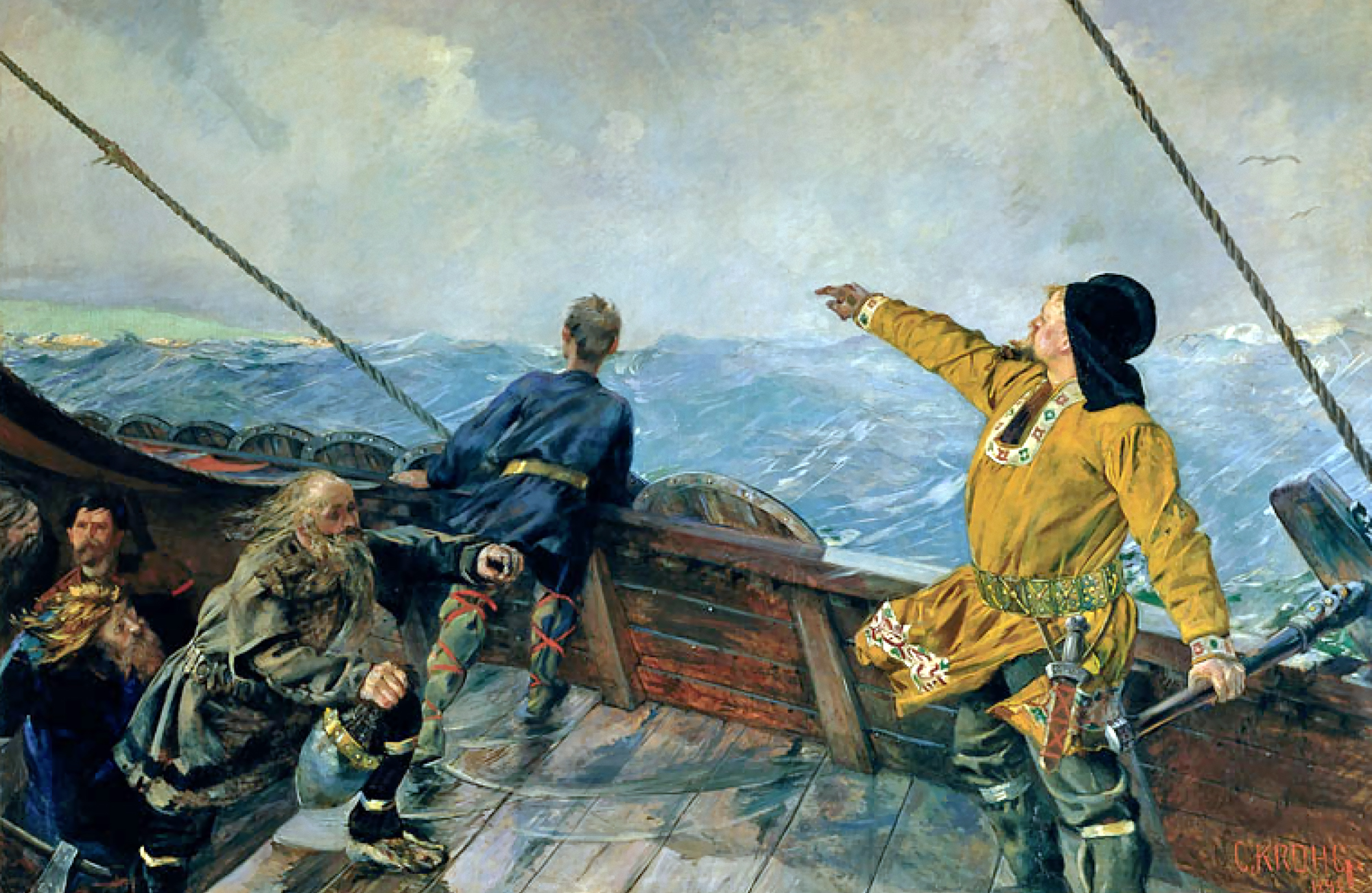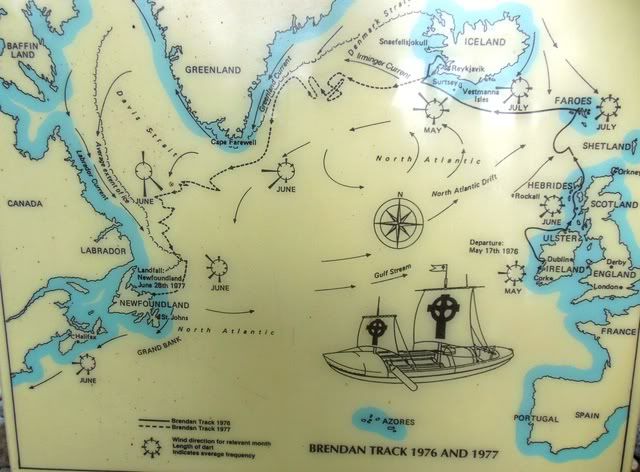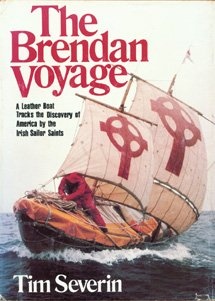
Bakersfield College | Kern Community College District | Professor J. Stratton
1801 Panorama Dr. – Bakersfield, CA 93305
| Diffusion theory and the Myth of Brendan’s voyage to America circa 700 a.d. | ||||||||||||||||||||||||||||||||||||||||||||||||||||||||||||||||||||||||||||||||||||||||||||||||||||||||||||||||||||||||
| The following list is sometimes used to reinforce the cultural diffusion theory about cross-Atlantic contact being much more varied than ‘traditionally’ believed.
This story was more of a historical anecdote than anything else until some things began to be noticed. One of these details was how the Native Americans of the New England and Nova Scotia areas of North America had an unusually high number of children with light pigment in their skin and eyes, and it was remarked that there were a noteworthy number of red-haired [or at least light haired] members of these tribal groups. The tribes that were observed to gather this information tended to be of the Algonquin language family. The original observations were more in the way of a noteworthy curiosity than anything else, if my memory serves accurately. It is worthy of note at this point that Irish monks of the period before 800 A.D. [C.E.] were noted for having female household ‘caretakers’ with whom they enjoyed carnal relations and had both children and a semblance of ‘family’. Celibacy began to be re-emphasized in what is known as the Catholic faith in the 900s A.D. [C.E.]. Thus it would be unsurprising if those Irish monks had fathered children IF they had crossed the Atlantic. It was later noted that there are some striking similarities between both the pronunciation and the meaning of some words in Algonquin and in the Gaelic/Celtic that Brendan would have spoken, IF he had made it across the Atlantic. The following is a list of these similarities. I confess that I can’t remember which of my mentors’ lent me this list nor can I remember where they said it came from. This was originally a photocopy of an overhead transparency they let me copy. I have since re-typed it to make it more legible than in it’s current state. Due to the issue of it’s historical provenance, I am only offering this as a piece of historical curiosity and interest. I am NOT attesting to the accuracy of the following list of terms, due to my lack of ability to document it’s origin. I repeat, this is for curiosity and interest only, NOT TO BE USED FOR DOCUMENTATION OR SUPPORT OF ANY OTHER IDEAS/WORKS/ASSIGNMENTS! However, if any of you are so curious as to research it and you can find any sources to corroborate this list, PLEASE email me so that I may give more factual credence to this. Without more ado, the list of terms sharing striking similarities for two languages unrelated in linguistic families and supposedly not sharing any contact with each other. The question is how easy is it to develop similar pronunciations and meanings for similar concepts in two diverse languages if there ISN’T any interaction? Also, keep in mind that names change in fashion frequently, but place names and descriptors don’t. That is why we talk about the Rock of Gibraltar, and in the time of Brendan it earned the name Gibral al-Tariq [Arabic for Tariq’s Mountain, named after an invading general into Spain]. Two different languages that have a similar pronunciation of a similar name for the same mountain. The list is as follows:
|
||||||||||||||||||||||||||||||||||||||||||||||||||||||||||||||||||||||||||||||||||||||||||||||||||||||||||||||||||||||||
| Bakersfield College | Kern Community College District | Professor J. Stratton 1801 Panorama Dr. – Bakersfield, CA 93305 |
||||||||||||||||||||||||||||||||||||||||||||||||||||||||||||||||||||||||||||||||||||||||||||||||||||||||||||||||||||||||



 According to one tradition, there was an Irish monk by the name of Brendan [sp?] who lived sometime during the ‘dark ages’ of Europe [around the 700s A.D./C.E.?] and who allegedly sailed west to a new world. According to my best recollection at this moment in time [and hour of night], the story alleges that Brendan and a couple other monks sailed due west from Ireland in an open curach [a traditional round Irish boat usually now called a coracle]. In this tradition, after a time [a year? A few years?] he returned to Ireland where he talked of another land with different people in it and then he gathered more materials to take back with him. He set off to the west again and was never heard from.
According to one tradition, there was an Irish monk by the name of Brendan [sp?] who lived sometime during the ‘dark ages’ of Europe [around the 700s A.D./C.E.?] and who allegedly sailed west to a new world. According to my best recollection at this moment in time [and hour of night], the story alleges that Brendan and a couple other monks sailed due west from Ireland in an open curach [a traditional round Irish boat usually now called a coracle]. In this tradition, after a time [a year? A few years?] he returned to Ireland where he talked of another land with different people in it and then he gathered more materials to take back with him. He set off to the west again and was never heard from.








